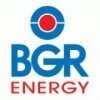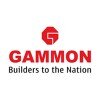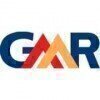Filter interviews by
L&T Construction Tool Design Engineer Interview Questions and Answers
L&T Construction Tool Design Engineer Interview Experiences
1 interview found
(2 Questions)
- Q1. What is stress and strain
- Ans.
Stress is the force applied to a material, while strain is the resulting deformation or change in shape.
Stress is the force applied to a material per unit area
Strain is the resulting deformation or change in shape of the material
Stress is measured in units of force per unit area (such as N/m^2 or Pa)
Strain is a dimensionless quantity representing the amount of deformation relative to the original size of the material
- Q2. What is elastic properties
- Ans.
Elastic properties refer to the ability of a material to deform under stress and return to its original shape when the stress is removed.
Elastic properties include Young's modulus, shear modulus, and Poisson's ratio.
Young's modulus measures the stiffness of a material in tension or compression.
Shear modulus measures the stiffness of a material in shear.
Poisson's ratio describes the ratio of lateral strain to axial stra...
Top trending discussions






Interview questions from similar companies

Design Engineer Interview Questions & Answers
Larsen & Toubro Limitedposted on 12 Sep 2024
I applied via Approached by Company and was interviewed in Aug 2024. There were 2 interview rounds.
(1 Question)
- Q1. Regarding questions about my nx experience & BIW Experience.
(9 Questions)
- Q1. What is Side member & cross member in BIW?
- Ans.
Side member & cross member are structural components in a car's Body in White (BIW) that provide strength and support to the vehicle.
Side member: Longitudinal structural component that runs along the sides of the vehicle, providing support and rigidity.
Cross member: Horizontal structural component that connects the side members, adding strength and stability to the vehicle.
Examples: Side members can be found on the sid...
- Q2. What is Annotations, PMI & GD& T?
- Ans.
Annotations, PMI & GD&T are tools used in engineering to communicate design and manufacturing requirements.
Annotations are notes or labels added to a drawing to provide additional information.
PMI (Product Manufacturing Information) includes dimensions, tolerances, materials, and other specifications needed for manufacturing.
GD&T (Geometric Dimensioning and Tolerancing) is a system for defining and communicating enginee...
- Q3. How to decide Bead & dart in member of BIW?
- Ans.
Beads and darts are decided based on design requirements, manufacturing constraints, and structural considerations in BIW members.
Consider design requirements such as stiffness, strength, and crashworthiness.
Take into account manufacturing constraints like tooling limitations and cost.
Evaluate structural considerations such as load distribution and stress concentrations.
Use simulation software to optimize bead and dart...
- Q4. Which method are used for making biw?
- Ans.
Various methods are used for making BIW (Body in White) including hydroforming, stamping, welding, and bonding.
Hydroforming: shaping metal using fluid pressure
Stamping: pressing metal into a desired shape
Welding: joining metal pieces together using heat
Bonding: using adhesives to attach metal components
- Q5. Diff b/w Hydroforming & forming?
- Ans.
Hydroforming uses fluid pressure to shape metal while forming uses mechanical force.
Hydroforming uses fluid pressure to shape metal while forming uses mechanical force
Hydroforming allows for complex shapes with uniform wall thickness, while forming may result in uneven thickness
Hydroforming is more cost-effective for large production runs, while forming is better for smaller quantities
Examples of hydroforming include a...
- Q6. What is GD& T & how it practical use it?
- Ans.
GD&T stands for Geometric Dimensioning and Tolerancing. It is a system for defining and communicating engineering tolerances.
GD&T is used to specify the allowable variations in form, size, and orientation of part features.
It helps ensure that parts fit together properly and function as intended.
GD&T uses symbols, such as position, concentricity, and flatness, to communicate tolerance requirements.
It is commonly used in...
- Q7. What is Benchmarking & Master section?
- Ans.
Benchmarking is the process of comparing one's business processes and performance metrics to industry bests or best practices from other companies.
Benchmarking helps identify areas for improvement and opportunities for innovation.
It involves analyzing data and metrics to understand how well a company is performing compared to others in the industry.
Master section refers to a standardized set of criteria or best practic...
- Q8. What is LMC & MMC? Least Material Condition & Max Material Condition
- Ans.
LMC & MMC refer to the conditions in which a part has the least or maximum amount of material respectively.
LMC is the condition where a part has the least amount of material, ensuring the smallest size of the feature.
MMC is the condition where a part has the maximum amount of material, ensuring the largest size of the feature.
These conditions are important in engineering design to ensure proper fit and function of part...
- Q9. How to decide Sheet metal thickness considerations?
- Ans.
Sheet metal thickness is decided based on factors like material type, part geometry, function, and cost.
Consider material type and its properties (e.g. strength, ductility)
Analyze part geometry and required structural integrity
Evaluate function of the part and potential stresses it will endure
Factor in cost implications of different thickness options
Consult industry standards and guidelines for recommended thickness ra
Interview Preparation Tips
- Body in white
- Manufacturing process
- Sheet metal design
- GD & T
Pls prepare BIW (Body in White) completey.
Catia & UG NX is good for design any part.

Design Engineer Interview Questions & Answers
BGR Energy Systemsposted on 20 Aug 2024
(3 Questions)
- Q1. WELDING SYMBOLS EXPLAIN
- Ans.
Welding symbols are used to communicate welding information on engineering drawings.
Welding symbols are used to indicate the type of weld, dimensions, and other important information related to the welding process.
They are typically composed of a reference line, arrow, and various symbols and letters.
Examples of welding symbols include fillet weld, groove weld, plug weld, and spot weld symbols.
Understanding welding sym...
- Q2. TYPES OF WELDING
- Ans.
Types of welding include MIG, TIG, stick, and flux-cored welding.
MIG welding uses a wire electrode and shielding gas to join metals.
TIG welding uses a tungsten electrode and inert gas to create a strong weld.
Stick welding, also known as shielded metal arc welding, uses a flux-coated electrode.
Flux-cored welding uses a tubular wire filled with flux to protect the weld.
Other types include spot welding, laser welding, and
- Q3. GD & T SYMBOLS
(2 Questions)
- Q1. TOOLS DETAIL & EXPLAIN
- Ans.
Design engineers use a variety of tools to create and analyze designs.
Design software like AutoCAD, SolidWorks, or CATIA is commonly used for creating 2D and 3D models.
Simulation tools like ANSYS or COMSOL are used to analyze the performance of designs under different conditions.
Prototyping tools like 3D printers or CNC machines are used to create physical prototypes for testing.
Collaboration tools like Slack or Trello...
- Q2. GIVE THE 2D DRAWING CREATED THE 3D MODELS
- Ans.
To create 3D models from 2D drawings, use CAD software to extrude, revolve, and loft shapes based on the dimensions and features shown in the drawings.
Import the 2D drawing into CAD software such as AutoCAD or SolidWorks
Identify key dimensions and features from the drawing
Use extrude, revolve, and loft commands to create 3D shapes based on the 2D geometry
Add details such as fillets, chamfers, and holes to complete the ...
Interview Preparation Tips
Skills evaluated in this interview

Design Engineer Interview Questions & Answers
McDermott Internationalposted on 25 Nov 2024
I applied via Campus Placement and was interviewed in Oct 2024. There was 1 interview round.
(3 Questions)
- Q1. Electrical engineers
- Q2. Electrical digine eng
- Q3. Why joined your company
- Ans.
I joined the company because of its innovative projects and collaborative work environment.
Opportunity to work on cutting-edge projects
Collaborative work environment
Company's reputation in the industry
Career growth opportunities
Interview Preparation Tips

I applied via Approached by Company and was interviewed before Dec 2023. There were 2 interview rounds.
(2 Questions)
- Q1. Process description of treatment plant
- Ans.
A treatment plant is a facility where wastewater is treated to remove contaminants before being discharged back into the environment.
Treatment plants use a combination of physical, chemical, and biological processes to remove pollutants from wastewater.
Common processes in treatment plants include screening, sedimentation, filtration, and disinfection.
Examples of treatment plants include sewage treatment plants, water t...
- Q2. About different concepts of pid
(2 Questions)
- Q1. Salary discussion and negotiation
- Q2. French language proficiency

Design Engineer Interview Questions & Answers
Larsen & Toubro Limitedposted on 2 Dec 2024
I applied via Recruitment Consulltant and was interviewed in Nov 2024. There was 1 interview round.
(3 Questions)
- Q1. Sheet metal limitations.
- Q2. Switchgear technical questions
- Q3. Previously company experience
Interview Preparation Tips
- Low voltage
- IEEE
Dont blabber in front of the interviewer.

Mechanical Engg. Design Interview Questions & Answers
BGR Energy Systemsposted on 4 Apr 2022
I applied via Naukri.com and was interviewed in Mar 2022. There were 3 interview rounds.

(1 Question)
- Q1. All about previous experience
(1 Question)
- Q1. Tool test with Invebtor software
Interview Preparation Tips

Design Engineer Interview Questions & Answers
McDermott Internationalposted on 26 Jun 2024
Mental ability test and maths aptitude
Energy sector and mobile good or baf

I applied via Referral and was interviewed in Oct 2022. There were 2 interview rounds.

(2 Questions)
- Q1. Question regarding Micro Drainage windes
- Q2. Dicussion about past projects
Interview Preparation Tips

Design Engineer Interview Questions & Answers
Larsen & Toubro Limitedposted on 10 Oct 2024
I applied via Company Website and was interviewed in Sep 2024. There was 1 interview round.
(4 Questions)
- Q1. Isometric Preparation
- Q2. Plot Plan Preparation
- Q3. Pump Piping Preparation
- Q4. Support Planning
L&T Construction Interview FAQs
Tell us how to improve this page.
L&T Construction Interviews By Designations
- L&T Construction Graduate Engineer Trainee (Get) Interview Questions
- L&T Construction Civil Site Engineer Interview Questions
- L&T Construction Senior Engineer Interview Questions
- L&T Construction Civil Engineer Interview Questions
- L&T Construction Site Engineer Interview Questions
- L&T Construction Assistant Manager Interview Questions
- L&T Construction Engineer Trainee Interview Questions
- L&T Construction Electrical GET Interview Questions
- Show more
Interview Questions for Popular Designations
- Design Engineer Interview Questions
- Tool Designer Interview Questions
- Mechanical Engg. Design Interview Questions
- Senior Design Engineer Interview Questions
- Electrical Design Engineer Interview Questions
- Structural Design Engineer Interview Questions
- Auto CAD Designer Interview Questions
- Piping Designer Interview Questions
- Show more
Interview Questions from Similar Companies
Fast track your campus placements
|
Assistant Manager
1.1k
salaries
| ₹6 L/yr - ₹18.2 L/yr |
|
Senior Engineer
665
salaries
| ₹3 L/yr - ₹12 L/yr |
|
Assistant Construction Manager
525
salaries
| ₹5.4 L/yr - ₹17.5 L/yr |
|
Civil Site Engineer
380
salaries
| ₹1.2 L/yr - ₹8.4 L/yr |
|
Assistant Engineering Manager
325
salaries
| ₹6 L/yr - ₹17 L/yr |

Tata Projects

Shapoorji Pallonji Group

Hindustan Construction Company

GAMMON INDIA
- Home >
- Interviews >
- L&T Construction Interview Questions >
- L&T Construction Tool Design Engineer Interview Questions
















